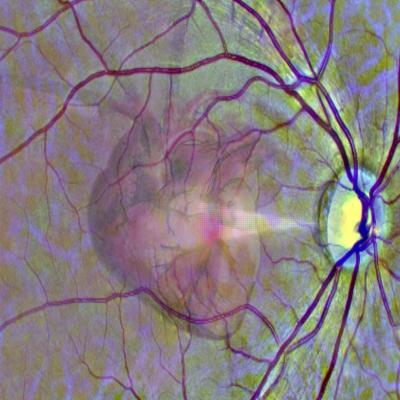Scientists have developed an artificial intelligence (AI) system that can analyze eye scans taken during a routine visit to an optician or eye clinic and identify patients at a high risk of a heart attack.

A graphic representation of the idea of using a scan of the eye to get a window into heart health. Credit: University of Leeds.
Changes to the tiny blood vessels in the retina are indicators of broader vascular disease, including problems with the heart. In the research, led by the University of Leeds, deep learning techniques were used to train an AI system to automatically read retinal scans and identify those people who, over the following year, were likely to have a heart attack. Deep learning is a complex series of algorithms that enable computers to identify patterns in data and to make predictions.
Writing in the journal Nature Machine Intelligence, the researchers report in their paper that the AI system had an accuracy of between 70% and 80% and could be used as a second referral mechanism for in-depth cardiovascular examination.
The study involved a collaboration of scientists, engineers, and clinicians from around the world, including the National Eye Institute.
Diaz-Pinto, A. et al. Predicting myocardial infarction through retinal scans and minimal personal information. Nature Machine Intelligence, doi:10.1038/s42256-021-00427-7 (2022).